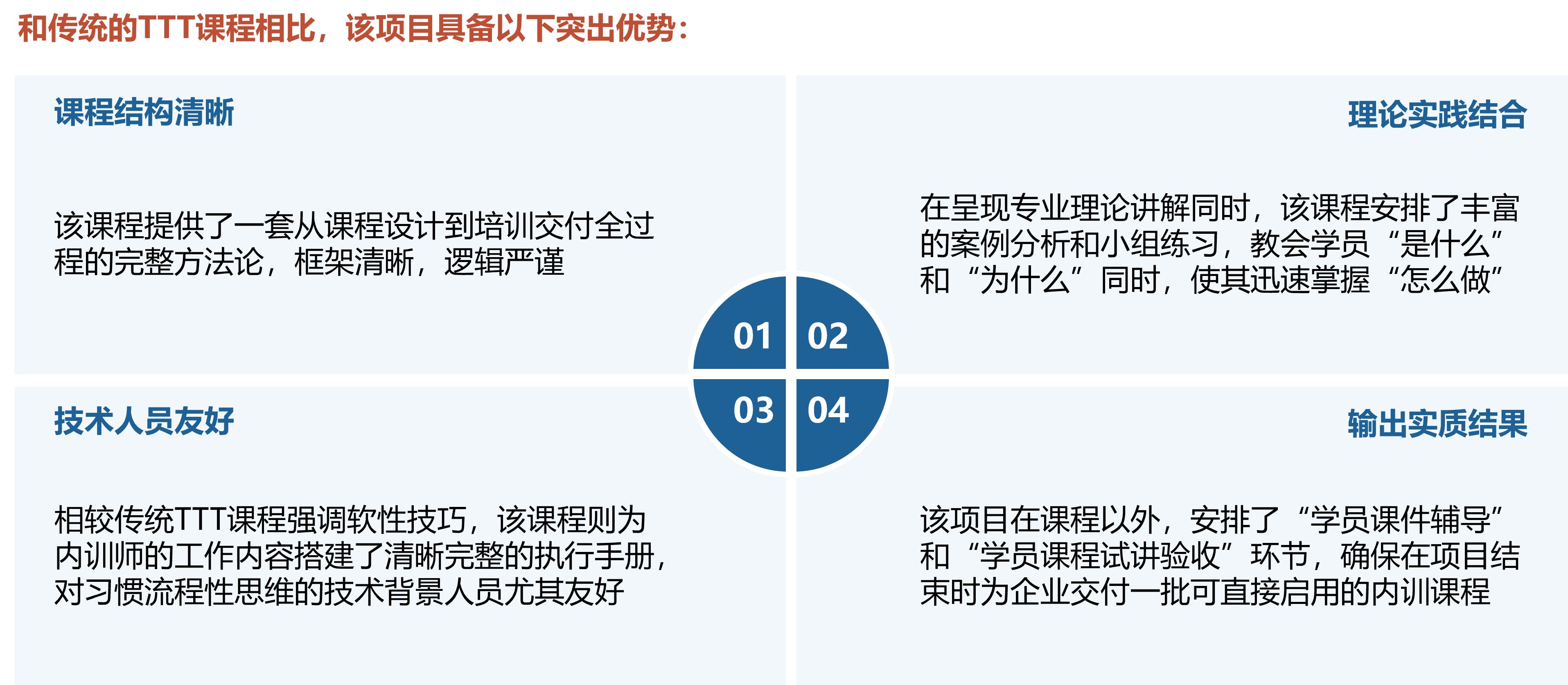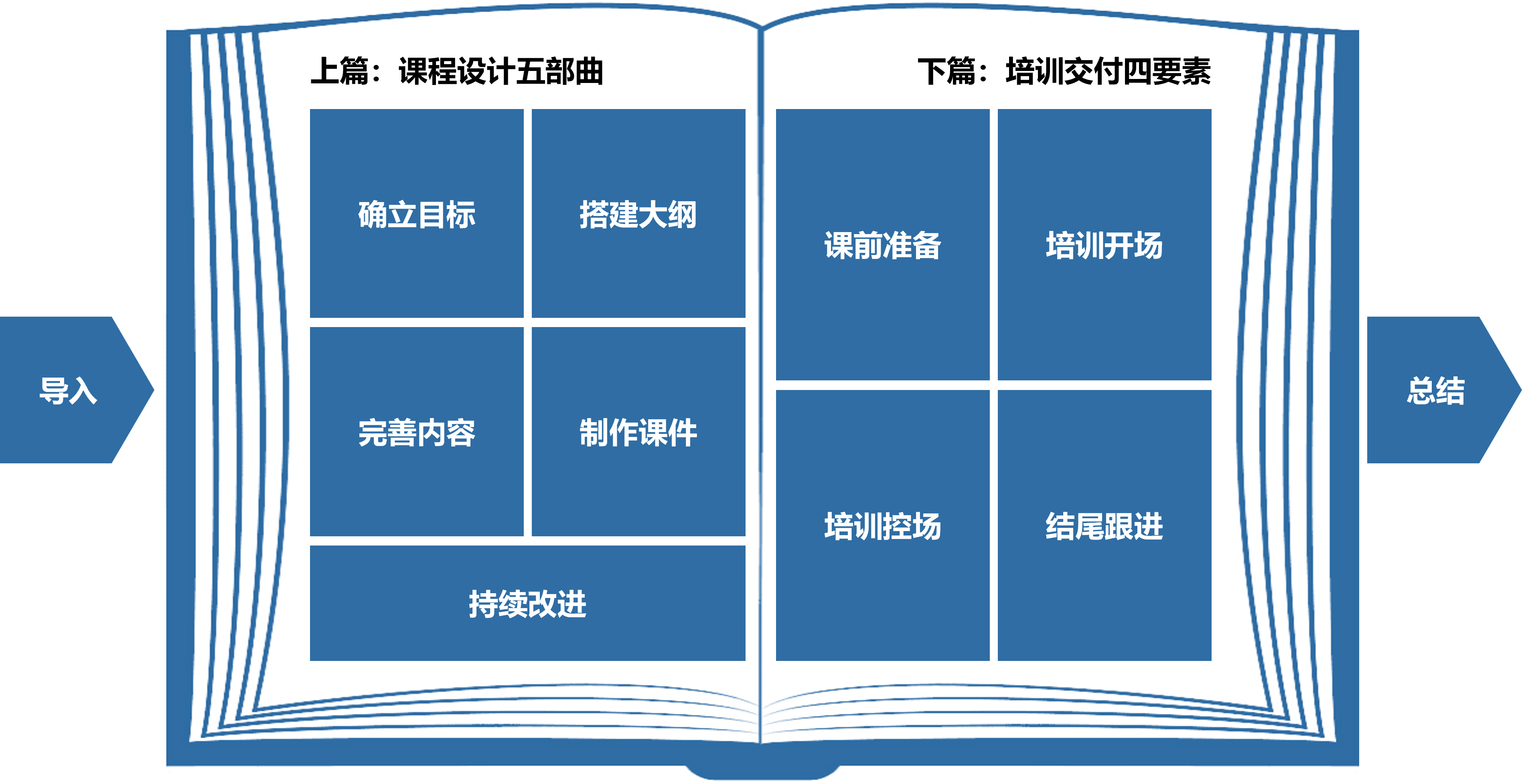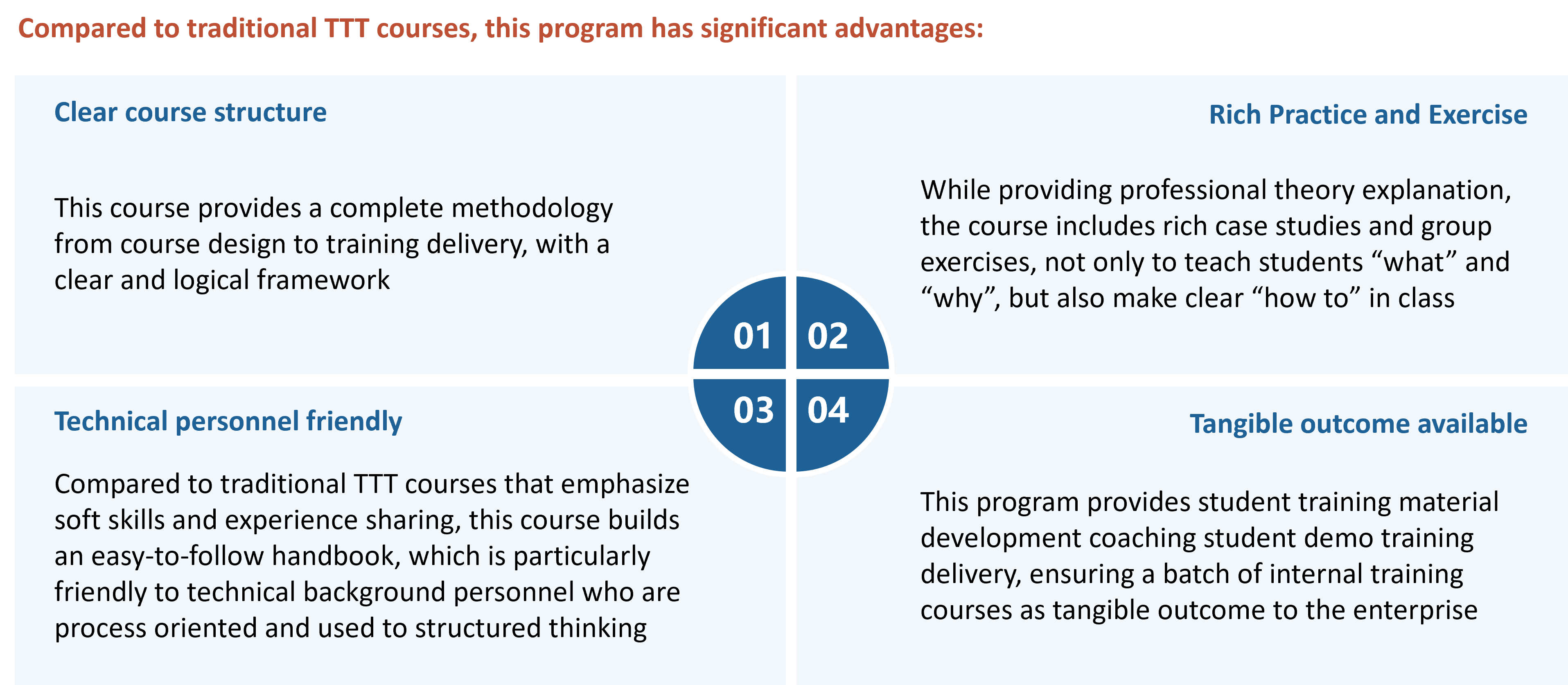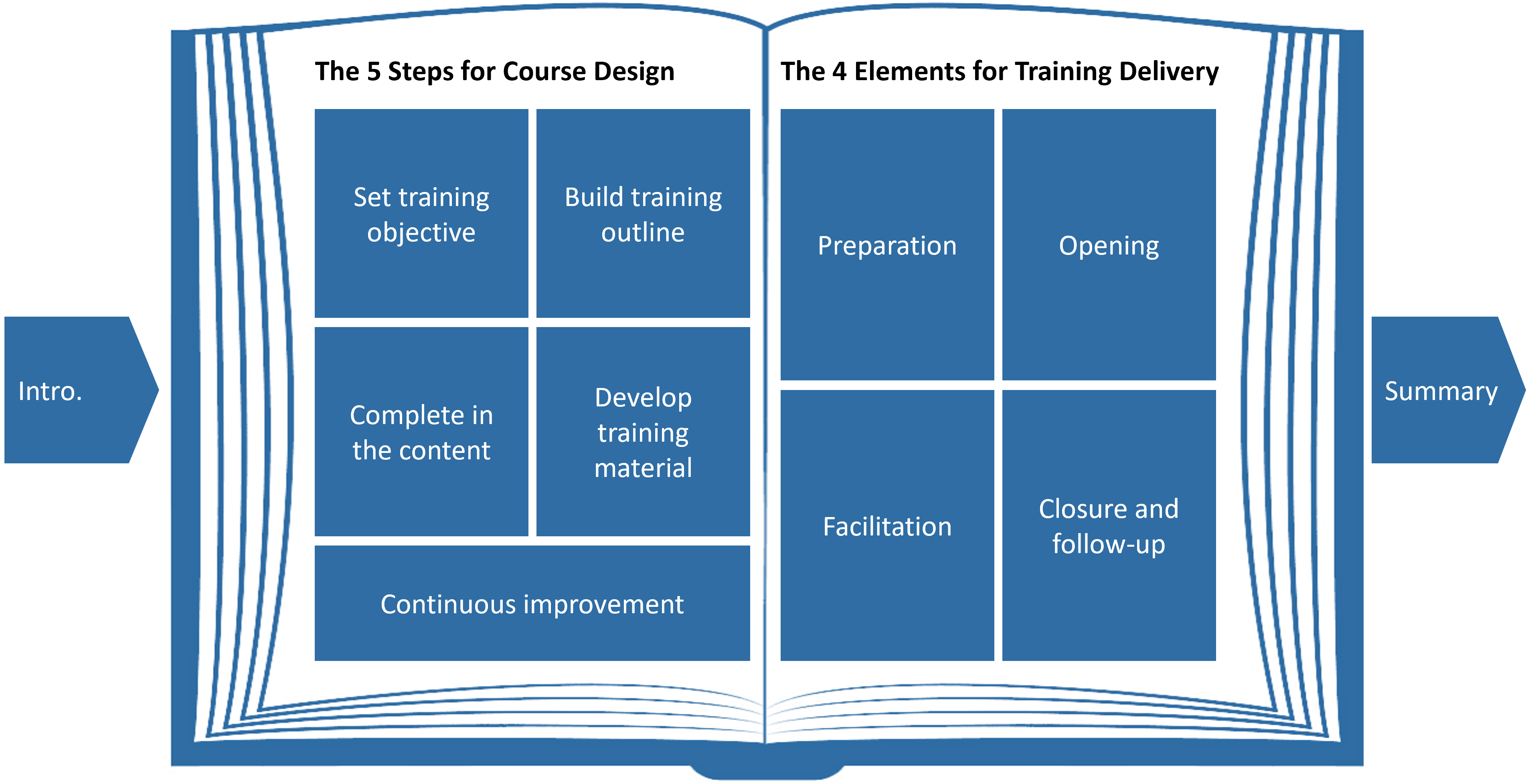主要课程
Courses
培训师养成训练营——从课程设计到培训交付 Train the Trainer - From Course Development to Training Delivery
Course: Train the Trainer - From Course Development to Training Delivery
课程名称:金牌培训师训练营——从课程设计到培训交付
时长/Duration: 2 days
语言/Language: CN/EN
课程简介
本课程分为上下两场,为企业内训师或即将成为培训师的学员提供了一套从课程设计到培训交付全过程的完整方法论,框架清晰,逻辑严谨,可操作性强。相比多数TTT课程着重介绍授课过程中细节处的技巧,本课程为培训师的主要工作内容搭建了完整且清晰的执行框架,涵盖了课程设计和培训交付这两个部分的所有环节。

另外,在呈现专业理论讲解的同时,本课程还提供了丰富的案例分析,不仅能让学员明白“是什么”和“为什么”,还能使其迅速掌握“怎么做”。最后,每场内容结束后,培训师将分别对学员的课程设计和培训交付提供一对一辅导。

目标学员
企业内训师或即将成为培训师的学员。
课程目标
• 帮助零基础学员轻松掌握成为培训师的要领,快速入门
• 帮助已有一定培训经验的学员精准识别自己薄弱环节,查漏补缺
课程大纲
本课程分为上下两场,并在每场结束后安排一对一辅导环节:

• 上半场——课程设计五部曲。上半场详细讲解了培训课程设计的五个步骤以及每个步骤需要完成的任务,这五个步骤分别是:
◦ 第一步:确立目标
– 调查培训背景
– 了解培训对象
– 确定培训主题
– 设立培训目标
◦ 第二步:搭建大纲
– 明确课程结构
– 建立主体部分设计思路
– 确定培训素材来源
– 制作培训大纲
◦ 第三步:完善内容
– 使用多样的教学方法
– 常见教学方法演示
– 贯穿始终的沉浸式设计
◦ 第四步:制作课件
– 培训课件PPT基本原则
– 提高课件制作效率的三个技巧:母版、色卡和快捷键
– 其他授课形式介绍
◦ 第五步:持续改进
– 新课试讲与验收
– 长期授课过程中的持续改善
• 学员课件辅导
• 下半场——培训交付四要素。培训下半场详细讲解了影响培训交付的四个要素,以及每个要素应该如何执行,这四个要素分别是:
◦ 要素一:课前准备
– 检查培训包
– 了解培训对象
– 教室布置与设备调试
– 讲师着装建议
◦ 要素二:培训开场
– 建立学员与讲师的联系一讲师自我介绍
– 建立学员之间的联系一学员破冰
– 建立学员与课程的联系一期望管理
◦ 要素三:培训控场
– 调整讲师心态
– 呈现专业演讲
– 留下美好印象
– 有效学员互动
– 应对尴尬情形
– 答疑技巧
◦ 要素四:结尾与跟进
– 培训收尾
– 收集培训反馈
– 追踪培训成果
• 学员试讲验收
Introduction
This is a training series with two sessions, providing a complete methodology covering from course design to training delivery for trainers and those who are about to become trainers with systematic framework, clear logic and strong operability.

Unlike most TTT courses which mainly focus on detailed training delivery soft skills, this course builds a complete and clear framework for all trainers to follow when conduct their daily work. In addition, while interpreting professional theories, the course also provides various case studies, which not only enables students to understand “what”and “why”, but also demonstrates them “how to”. Last but very importantly, after each session, one-on-one coaching is provided on both course design and training delivery.

Target Audience
Internal trainers or those who are about to become trainers.
Objective
• To help beginners master the essentials of becoming a trainer and get started quickly
• To help trainers with certain experience to identify their own weaknesses and improve accordingly
Course Outline
This training series has two sessions, after each session, one-on-one coaching is provided:

• Session 1: the 5 steps of course design
◦ Step 1: Set training objective
– Investigate training background
– Learn about target participants
– Identify training topics
– Set training objective
◦ Step 2: Build training outline
– Clarify the overall structure
– Develop the roadmap of main content
– Check the source of training materials
– Build training outline
◦ Step 3: Fill in the content
– Use various of teaching methods
– Demonstration of common teaching methods
– Simulation design throughout the training
◦ Step 4: Develop training slides (PPT)
– Basic principles of PPT slides making
– 3 skills to improve slides making efficiency: Slide Master, Color template card and Shortcuts
– Introduction to other teaching formats
◦ Step 5: Continuous improvement
– Trial lecture and acceptance of new courses
– Continuous improvement during long-term teaching
• One on one coaching on training material
• Session 2: the 4 elements of training delivery
◦ Element 1: Preparation
– Check training material
– Learn about the participants
– Classroom layout and equipment check
– Trainer dress code
◦ Element 2: Opening
– Connect participants with the trainer - trainer self-introduction
– Connect participants with each other - ice breaker activities
– Connect participants with training content - expectation management
◦ Element 3: Controlling
– Adjust your “trainer mindset”
– Give professional presentations
– Make good impressions
– Interact with student effectively
– Dealing with difficult situations
– Q&A skills
◦ Element 4: Closure and follow-up
– Training closure
– Collect training feedback
– Track training results
• Course Demonstration Evaluation


